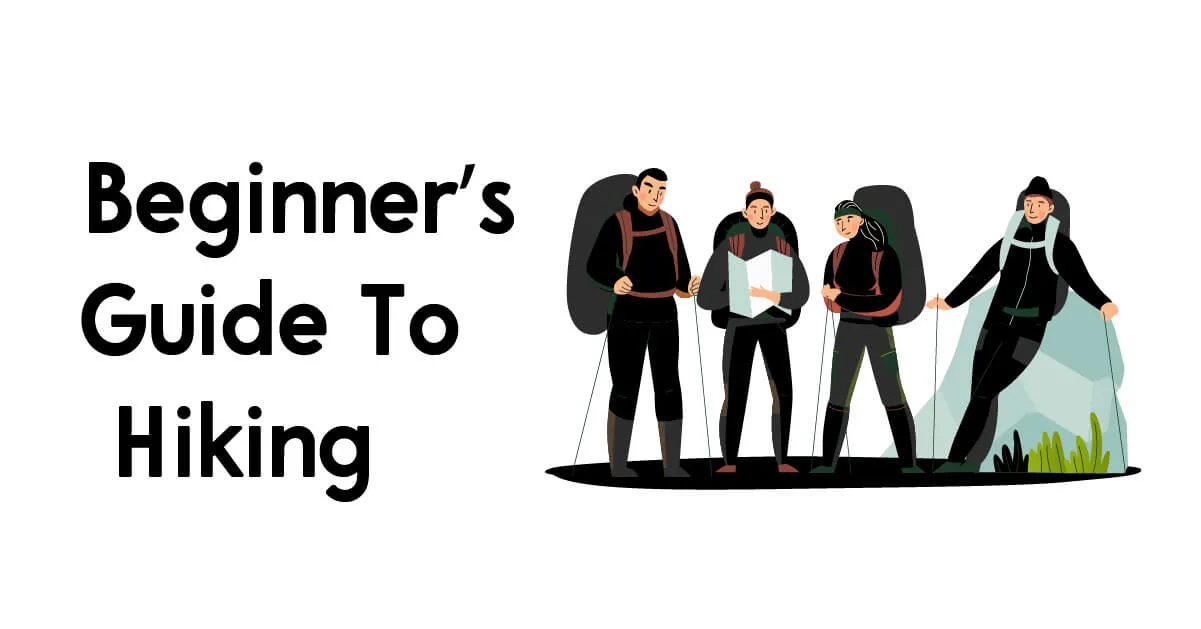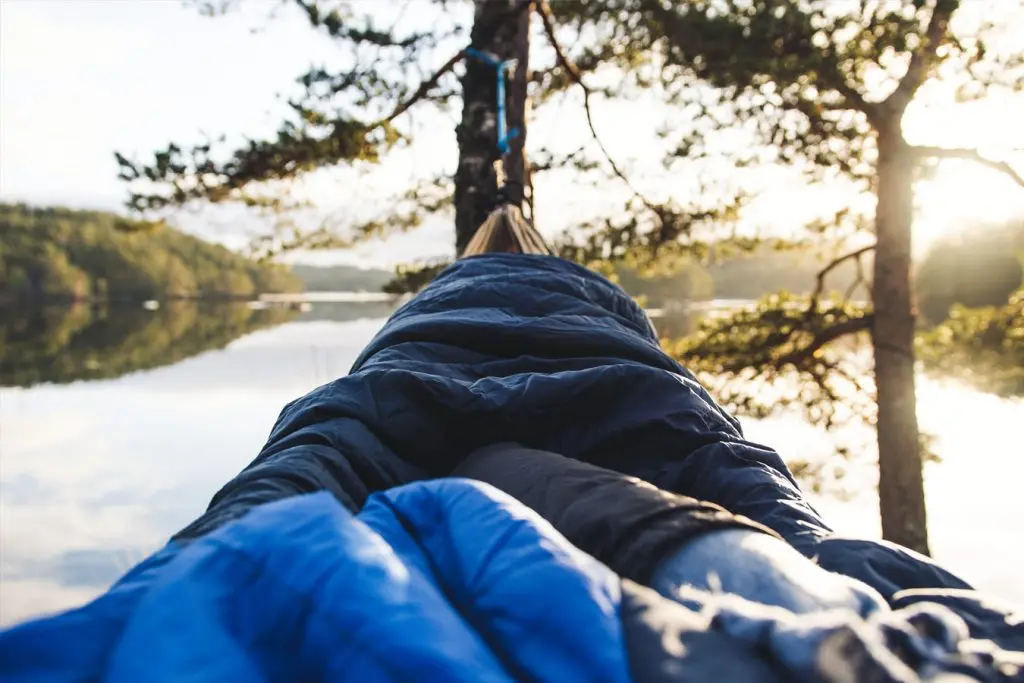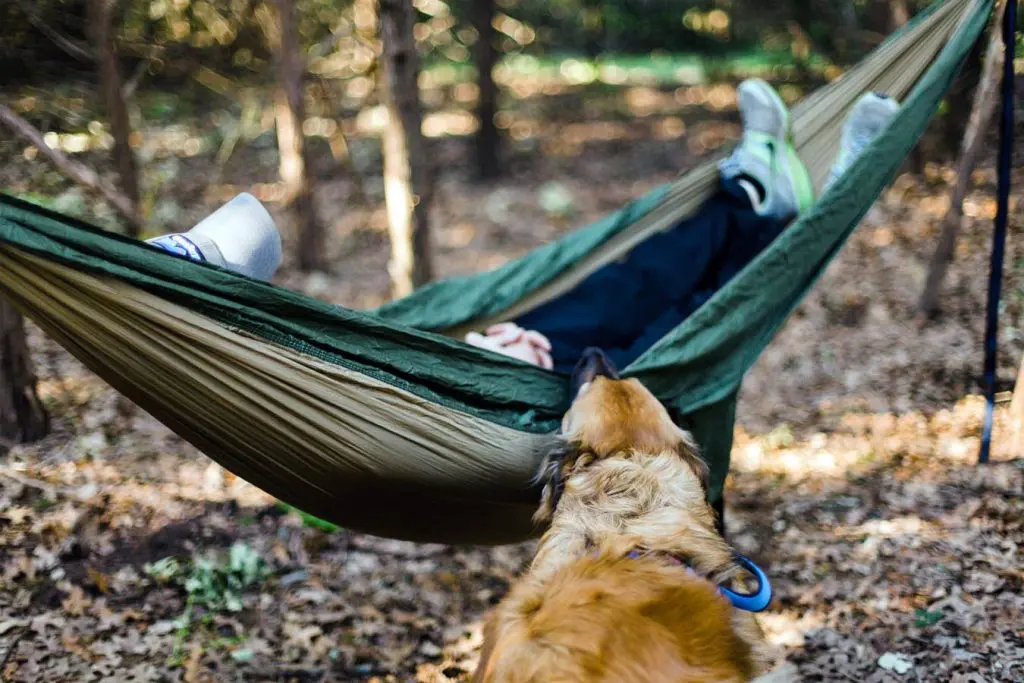More and more people are getting involved with the wilderness. The allure of walking through woods, standing on mountains, and finding untouched lakes has given many of us the energy to learn more.
If you are romanticizing the hiking world, we won’t stop you. But don’t think that you have to know every bird call out there to be successful. Yes, it can be wonderful to understand the patterns and flock migrations of an area, but you don’t need to know this to be a hiker.
We will explain everything you need to be aware of to start your hiking journey.
Table of Contents
What Is Hiking?
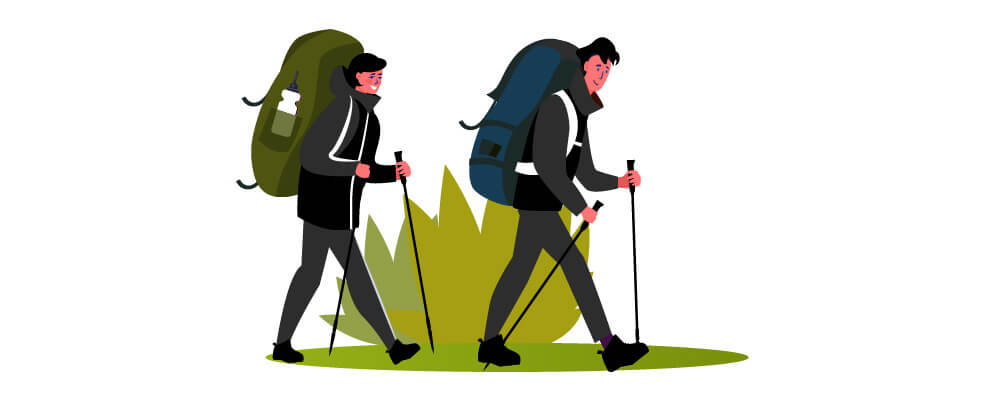
If you want the simple answer, hiking is when you go for long walks in the countryside.
In comparison to walking, a hike is when you travel for long distances over untouched or difficult terrain. Walking is a short and easy action on defined tracks or smooth surfaces.
For example, you could walk around the park or hike up Pen-Y-Fan.
Those are the official and bland ways to explain hiking. But we think there is much more to the hobby. In the community’s eyes, hiking is when you spend a lot of time in a natural environment. They can take hours or even days to complete. Although you might find other people on the trail, too, you expect to be alone in nature, giving you a sense of calm that almost feels spiritual.
Hiking isn’t about getting from A to B. It’s about experiencing the landscape and reconnecting your body and mind to the world around you.
Why Is Hiking So Great?
There are tons of reasons why people love to hike, but if you need more than our dreamy explanation above, here is a more defined list.
1. Easy Exercise
Although walking is an exercise on smooth ground, hiking can help you stretch your muscles and strengthen your legs in the same movement.
If you aren’t used to exercising, you can start off with a simple hour hike, and that will be enough to gain a fantastic cardio workout.
Although you can lose weight and tone muscle easily, your body won’t be overworked or at risk of injury. This is because the workout is slow and steady, giving you time to adjust.
2. It's An Ethical Adventure
Many of us are desperate to get a thrill in life. To some, that means going on roller coaster rides; to others, it means traveling the world to experience new things.
If you feel this pull to adventure, know that it can be met through hiking too. Not only do you get to learn about the new environment, but you can conquer heights and tricky passages. And you can do this all while staying ethical to the world around you.
3. It's Free!
You don’t need to buy a membership, be part of a team, or buy tons of equipment to be a hiker. Sure, you might need some good shoes (which we will talk about later), but that’s only to make the journey more comfortable.
In reality, all you need is a good spirit and a lunchbox!
4. Disconnect From Technology
Although you can bring your phone on a hike, you don’t need to. This is the perfect environment to switch off from your social media and emails, allowing you to take a step back and breathe.
5. Great For Your Mental Health
It has been scientifically proven, time and time again, that immersing yourself in nature improves your positive engagement with the world. As you walk with nature, the stresses of everyday life fade away.
The Benefits Of Hiking
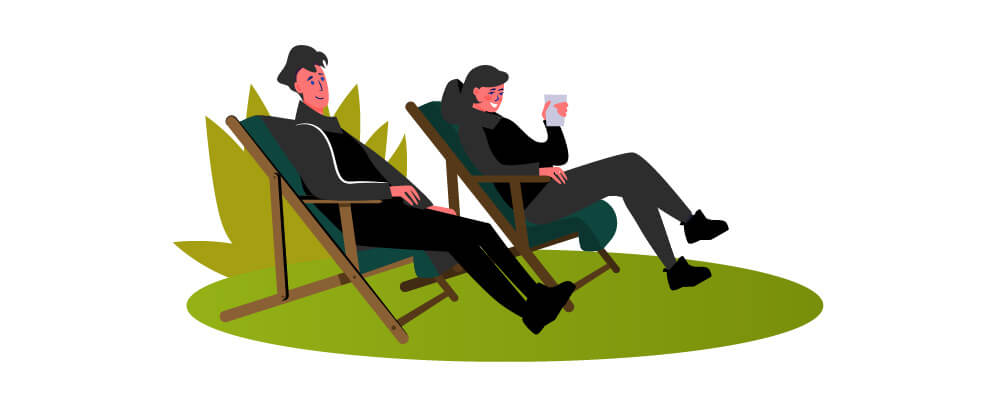
We have briefly talked about how hiking is excellent at helping you lose weight and tone muscle. Now we want to go into more details and explain just how this easy and innocent exercise can help you and your health.
1. Losing Weight
Just like any exercise that makes your heart race and your breath quicken, hiking can help you reduce your body fat. This is true whether the hike is flat or steep; which means, if you want to lose as many pounds as possible, you can do so without spending money.
All you need is a quicker pace and a steeper gradient. Steeper gradients force you to use more of your leg muscles to push you up the hill, while a quick pace forces you to use more of your fat reserves to power through. Both work amazingly.
2. Toning Muscles
This slow and constant exercise is perfect for toning your muscles. It works specifically well on your hamstrings, calves, and quadriceps. This means you can prevent muscle loss through old age, or you can make your muscles more defined for a certain aesthetic appeal.
4. Stimulates Your Brain
Again any sort of regular exercise can keep your brain active and prevent health issues such as dementia and Alzheimer’s. However, hiking is an option that most people can pick. Being out in nature and seeing the natural world can help you take in the details of a landscape around you instead of a simple artificial structure.
5. Improves Mental Health
Through exercise, your body releases a lot of endorphins. This is a hormone that helps reduce anxiety and boost your mood. When it comes to hiking, the added effect of scenery can reduce the risk of depression by 20%.
How To Plan And Prepare For A Hike
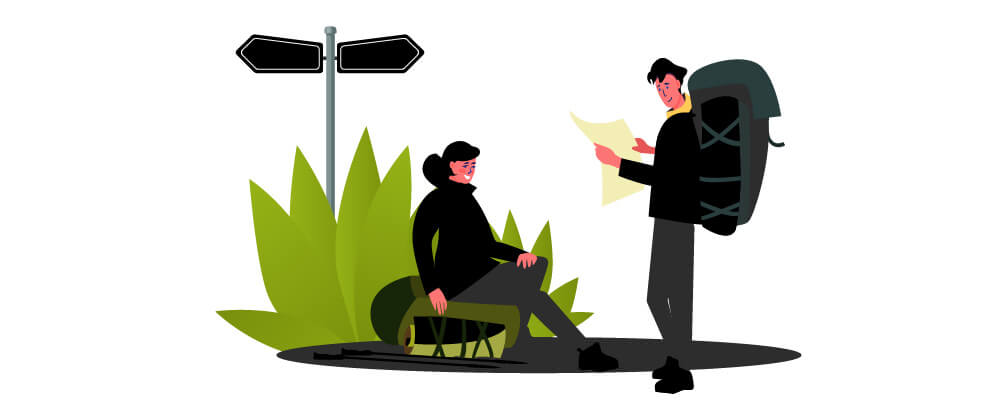
You don’t need to know a mountain like an expert in order to hike it. Instead, you just need to prepare.
1. Know Where You Are Going
Before you set off on your hike, you need to know where you are going. Either pick up a path map from the information center before your trek or find the right map for the area.
Ideally, your first hike should be in a known location that has a lot of paths, guiding information, or fellow walkers. The information center should give you a map of the area to help you navigate the landscape.
If you are going completely off-beat, though, using your own map can help you create a path to stick to.
2. Bring A Buddy And Tell People Your Route
You shouldn’t hike on your own. Although the risk of injury is low, that doesn’t mean the worst cannot happen. If you bring a friend with you, they can call for help if an accident occurs.
You should also tell someone about your plans and the route you plan to take. That way, if you don’t come back at the expected time, this person can contact the search and rescue team to find you. Without this information, the team might take days to locate you.
3. Prepare For Local Risks
Knowing the area you are about to hike through is important. If there are dangerous snakes in the foliage, you should bring antidotes. If there are risks of ice, you should bring crampons. If the area gets unusually hot, you should bring more water than you would normally need.
Put the area into a search engine and find out what you need to be prepared for.
What To Pack For Hiking Trips
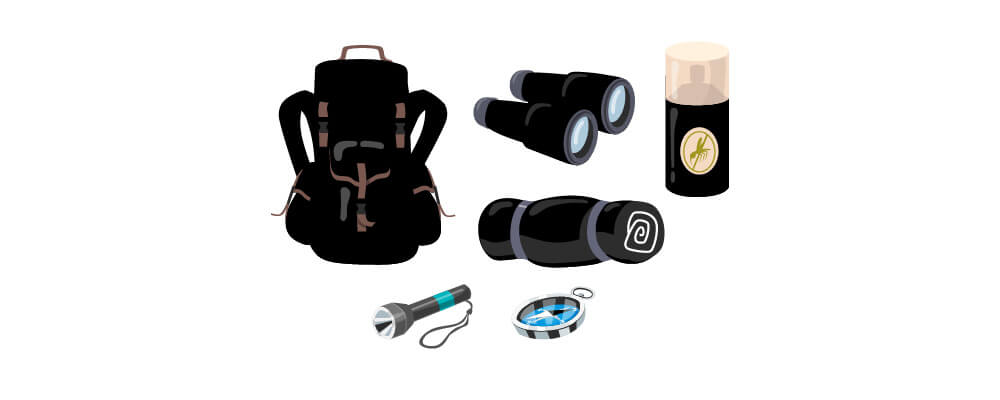
Although hiking is a free experience, you should really consider taking all of these items before starting your journey. Investing in these types of equipment will keep you happy and healthy on the trip.
1. Hiking Clothes - Terrain Specific
Hiking clothes consist of shoes with a firm grip, thick socks, waterproof jackets, breathable tops, and breathable pants. Depending on the terrain you are journeying through, you may want waterproof pants too.
Consider the type of weather you will experience. If it’s cold, bring a hat and gloves. If it’s wet, bring waterproofs. And If it’s hot, bring a hat and sunglasses.
2. Backpack
You want a rucksack that can fit all of the equipment you need to bring. Anything bigger than that will make you unbalanced as you walk. Anything smaller than that will be useless. Normally a typical-sized backpack will be enough.
3. Portable Charger
Although you don’t want to be on your phone as you escape your life to wander in nature, you may need to contact someone in an emergency. This is why you should always have a portable charger on hand.
4. Sunscreen
Even if you are walking through the wetlands, you may experience a moment of bright sun. Bringing sunscreen will protect you from the sun’s rays and keep you free of sunburn.
5. Insect Repellent
Bugs eating at your skin is a quick way to ruin your adventure. Bring the spray with you, so you are always topped up and protected.
6. Torch
Although your phone most likely has a torch, you should save the battery for more important uses. Having a separate torch can help you shine a stronger light and keep you safe if the sunlight goes before you are ready.
7. First Aid Kit
This one goes without saying. A basic first aid kit can stop you from getting an infection from a cut or wound.
8. Emergency Blanket/Clothes
Emergency clothes can be a spare pair of socks and an extra top. The idea is to place wet clothes if you get caught in a shower.
8. Emergency Blanket/Clothes
Emergency clothes can be a spare pair of socks and an extra top. The idea is to place wet clothes if you get caught in a shower.
You should also bring a foil blanket that is lightweight enough to carry without difficulty but can keep you warm in the winter.
9. Duct Tape
This might sound odd, but duct tape is a hiker’s best friend. If your shoes break, your bag rips, or you need to close a wound – duct tape can help you out.
What Foods And Drinks To Bring On A Hike
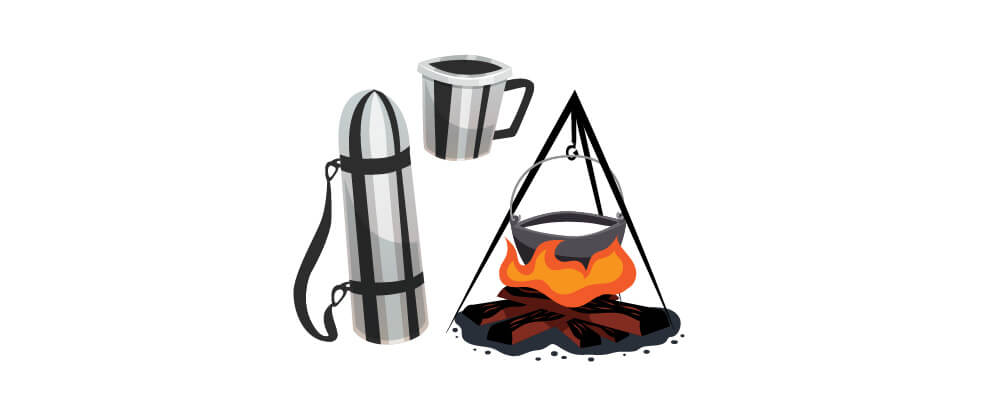
The most important thing is to bring food and water, period. If you take foods you will not eat, then you are carrying weight for no reason. Bring something that you will consume even if it isn’t the healthiest.
1. Water
To be hydrated all day, you should at least have 2 liters of water. However, there is nothing wrong with bringing more – especially if the climate is hot.
2. Energy Drink
You need to keep your sugar levels up; otherwise, you might not have the energy to continue. Take energy drinks to quickly keep you going.
3. Flask Of Hot Drink
If you are hiking through the day, you will need something to keep you warm. A flask of tea or coffee can do just that. And if you are walking in the winter or in cold areas, you will need a hot drink to regulate your temperature.
4. Sandwiches
Sandwiches are simple to make, contain carbs to give you energy, and are easy to pack. Bring enough for the meals you will miss while hiking and for snacking too.
5. Protein
Just like you need sugar, you will need protein too. This could be cooked chicken, a collection of nuts, or anything. Consider this protein boost for your snack.
6. Energy Bars
Energy bars are another way to get sugar into your body. You can whip them out easily, and they will give you the energy you need to continue going.
7. Waste Bag
Never litter as you hike. Any wrappers or waste that you create should be taken home with you. Make this easier by taking a carrier bag on the trip.
Hiking Safety Tips
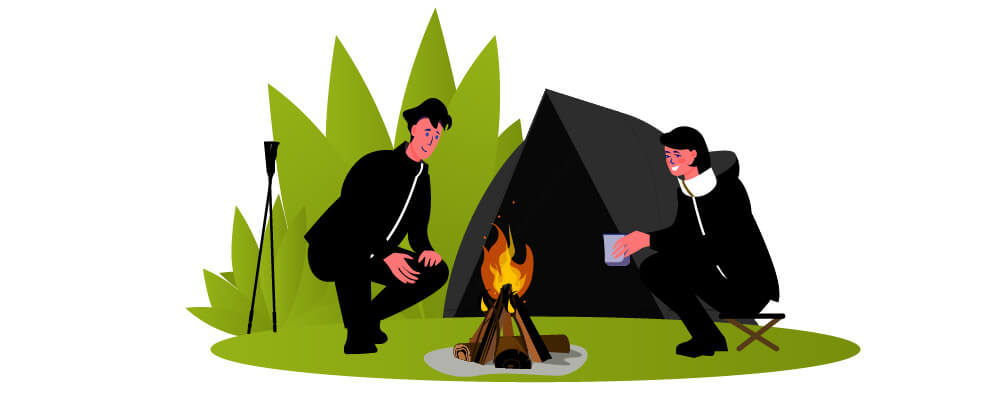
Although hiking isn’t considered a difficult activity in general, you need to be aware of the risks involved. Keeping yourself safe often means preparing for the worst.
Allow us to walk you through problems you might face and how to solve them.
1. Becoming Lost
Ideally, you should have plotted your route before starting your journey; however, even the most thoughtful planning can be hindered by heavy fog.
In times like these, you may need an app to help you navigate to safety (which is one reason for the portable charger). You should also search for local landmarks that can help you recenter yourself.
Alternatively, you can send someone your What3Words location to find you anywhere in the world.
2. Bring More Food And Water Than You Need
Hopefully, your trip will not end with you lost and stuck in the wilderness; however, if that situation does occur, you need to have enough sustenance to wait for help. Be sure to bring enough food and water to keep you going while a rescue team tries to find you.
3. Check The Weather Before You Go
It doesn’t matter what the location is normally like if it changes on the day. Your typically sunny hike could change into a day of pouring rain. Without the waterproofs you need, you can easily catch a cold or develop hypothermia.
Temperatures of 50 degrees Fahrenheit or 10 degrees Celsius can cause you to develop hypothermia. The temperature increases if the area is wet or windy, bringing the dangerous number up to 60 degrees Fahrenheit or 16 degrees celsius.
Early signs of hypothermia include:
- Becoming cold, pale, or developing blue-gray skin
- Developing a lack of concern or interest that doesn’t match your personality
- Shivering
- Displaying poor judgment skills
- Developing a slurred speech pattern
- Numbed fingers which stop you from performing simple tasks
- Inability to balance or walk
Late signs of hypothermia include:
- Confusion
- Intense shivering
- Drowsiness or uncharacteristic weakness
- Slowing pulse
- Shallow and slow breathing
- Stiff muscles
- Loss of consciousness
4. Break-In Your Shoes Before The Trip Starts
Hiking shoes are fantastic because they are thick enough to tackle challenging terrain but supportive and comfortable to protect your heels.
However, to make sure you feel the full effect of their comfort, you need to break them in. This means taking easy and short walks with the shoes on, so they can mold to your feet. The more molded they are, the less likely they will rub or cause blisters on the day.
You can speed this process along by flexing the soles of the shoes to break down the factory level of stiffness. If you follow this technique, be gentle, as you don’t want the sole to break.
Some people try soaking the shoes in water to loosen the fabrics but do not follow this advice. It can loosen the leather, sure, but you will be adding more friction to the soles making friction burn more likely. Imagine stepping into a puddle and having to walk in those shoes. It will hurt.
5. Tell A Friend About Your Plans And When You Should Be Back
We have already talked about the importance of telling someone where you are going, but be sure to tell them your whole plan. If they know that you plan on walking through the woods, stopping at a cafe, traveling past a mountain range to end the trip at a hotel, then they know where to check if you went missing.
Each point on your journey could be found; maybe you made it to the cafe but not the hotel. This vital information could be enough to help the search and rescue team locate you.
Knowing when you should be back is helpful too. If the journey could take 3 days according to google maps, but you’re fit enough to do it in one, then that knowledge can persuade your friend that the lack of texts is concerning.
6. Check The Weather Before And During The Trip
Again, we have already mentioned looking at the weather report before going on your trip. We discussed this to make sure you bring the right clothes and protection with you. But, you should check the forest during your hike too. You might notice that the clouds are getting darker, and you are at risk of walking in a shower.
Knowing this, you should prepare to either set up camp or find a hotel nearby. This could add hours to your journey, but at least you will be safe from a storm.
If you do change your plans like this, you will need to inform your friend about the update. That way, they are prepared for your late arrival and do not need to be concerned about the delay. They will also know about your latest checkpoint to make any search and rescue mission easier.
7. Keep Hydrated And Energized
Although we have talked a lot about preparing for the worst, you shouldn’t avoid drinking or eating simply to save your supplies. You will likely not encounter any issues on your hike, so you should eat the food and drink the water you need for the journey.
If you don’t keep your electrolytes up, you can expect the following symptoms:
- Nausea and vomiting
- Fatigue and dizziness
- Muscle weakness
- Headaches
These problems can be easily fixed by drinking energy drinks and resting. If you are confused about how much food or water you should reserve for emergencies, simply follow this guide:
- Pack enough for your travel
- Double that for emergencies
- Eat the travel packed food as intended
Leave the emergency stash until needed.
8. Hiking Isn't A Race - Go Slow And Steady
Ideally, you should be keeping a steady pace while you hike. This is so your muscles don’t become overworked as you reach uphill terrain. You might think that walking slowly while on flat land can help you save energy for the climbs, but in reality, you will be creating a significant shift in energy when the change occurs.
Keeping a steady pace can help your body adapt and change as you move.
To help maintain this pace, pre-plan breaks through the trail. These breaks should only last 5 minutes and should be separated every 1 or 2 hours. This will allow you to eat a sugary snack and drink water without breaking your stride.
Adjust this timer for if you are a seasoned hiker or a beginner, giving yourself more or fewer breaks as needed.
Keep in mind that moving your muscles constantly will stop them from cramping or getting tired.
What To Do Post-Hike

After your hike, you need to relax and calm your body from the physical exercise you have just enjoyed.
To make sure you don’t get stiff, you should practice whole-body stretches but really focus on your bottom half. For example, you should try quadriceps, hamstring, and calf stretches, followed by hip, back, and ab stretches, ending on a short forearm and shoulder blade stretch too.
Once you have loosen any tight muscles, allow yourself to splurge in a warm bath, and soak in the relaxing feelings.
Once you have relaxed your body, you will likely start to crave food and water. Eat a large meal filled with healthy fats, protein, and vegetables.
And lastly, you should clean and dry your clothes to stop any mildew from settling in the fabrics. Mold can quickly eat away at your camping or climbing equipment, so get everything clean to extend their life.
Trail Etiquette And Green Thinking
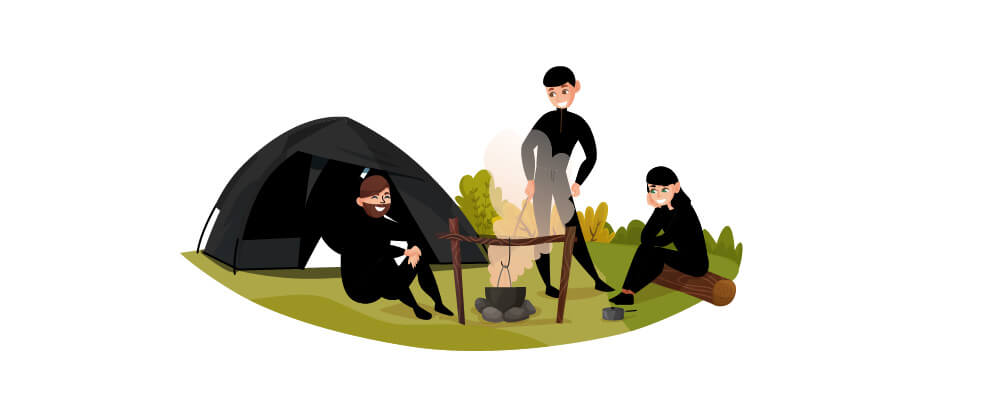
It can be easy to think that everyone hiking in any area understands how to respect nature, but unfortunately, we live in an artificial world where most of our intuitive care has been lost to us.
We want to make sure everyone reading this article understands how to care for the world around them and keep their natural landscapes healthy.
Green Thinking
In this section, we will go through the 4 important green rules to prevent polluting the world and avoid harming the landscape. Later we will explain trail etiquette to help make your journey as tranquil as possible.
1. Leave No Trace Of Your Travels
You may need to use plastic or wrappers to carry your food, and that’s okay. However, just because you’ve finished your snack doesn’t mean you can chuck out the remains. Whatever rubbish you create or bring should be taken back with you.
We discussed earlier how you could bring a waste bag to contain any trash you have collected. To make sure you don’t forget your garbage, keep a waste bag in your backpack at all times. When you return home, throw away your rubbish and replace the bag, so there is always something to use.
2. Stick To The Path
If you are hiking through a well-known area with a path, stick to it. Although it might be tempting to venture into the untouched areas around the trail, you could be trampling wildlife and foliage that is trying to thrive.
Nature reserves put a lot of energy into protecting these creatures. Anything from large animals to tiny insects, protected trees to rare flowers. They could all be harmed if you disturb their home.
3. Don't Disturb Animals
This concept of green thinking is also a tip for safety. If you disturb or approach the animals around you, you could accidentally signal that you are aggressive. Whether you are or not is irrelevant, the animal could misunderstand you. You then put yourself in danger of being attacked.
Secondly, you shouldn’t disturb the animals in your area as interacting with humans could draw them closer to artificial structures. This, in turn, could put them into dangerous situations that they cannot deal with. Think of a deer on the road. They shouldn’t be there. They get startled when they see the headlights of a car, and the light stops them from running away.
Staying clear of the animals stops them from coming closer to dangerous lands. It helps us protect them.
4. Relieving Yourself Outside
Don’t be afraid to relieve yourself outside. If you need to go, you need to go! However, there are some rules to keep you and the wildlife safe from your waste.
First, you need to stay away from a water source. It might seem logical to pee into a river where the water can dilute it or to poop somewhere you can wash. However, if you do this, you will be contaminating the waterways, which can harm the wildlife.
You should also avoid locations directly near the trail or near camping areas. This is because you can contaminate the human areas or attract wildlife that can harm others.
Instead, you should dig a hole, do your business, and then cover it back up again. That way, the larger wildlife won’t be attracted to the mess, and the microbes can digest the waste.
Trail Etiquette
When it comes to etiquette, there are just a handful of things to keep in mind. You might already be practicing these ideas anyway, but if not, you’ll soon learn how to respect the other hikers near you.
1. Priority On The Trail
On the trail, you should follow this level of priority – horses, hikers, then cyclists. This means horses should be allowed to overtake you if needed. They should be given the space required to keep them calm and safe on the hike.
Hikers are next, and the bikers come last. If the cyclists see hikers on the same trail, they should slow down and make themselves obvious through a bell. Hikers can move out of the way, but if there is a crowd, the cyclists should dismount and walk until the path is clearer.
2. Have An Uphill And Downhill Path
On your walk, you’ll notice some people moving in the opposite direction to you. Make way for these hikers by staying on one side of the path.
3. Keep Music To Yourself
If listening to the hobbit soundtrack while hiking up Ben Nevis is the aesthetic you’re after, that’s great. But not everyone will want to join in. Use headphones to keep the landscape tranquil to other hikers.
Summary
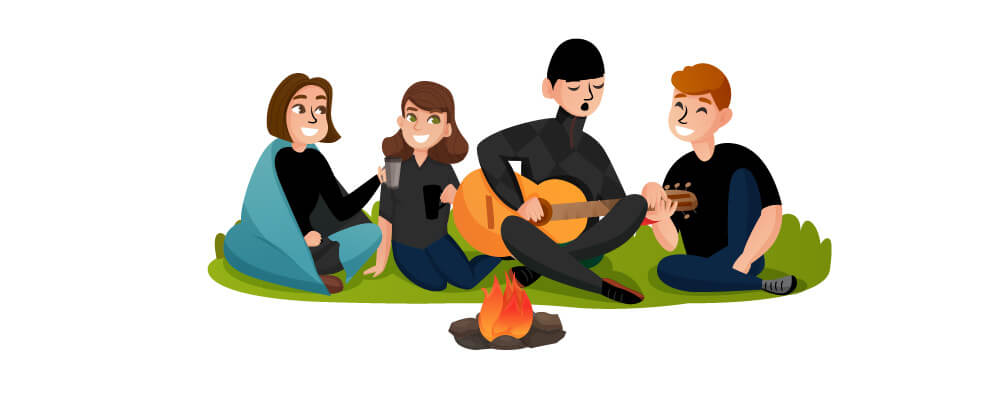
Hiking is a wonderful way to become healthy. It can tone your muscles, stimulate your brain, and help you lose weight.
Getting into hiking is easy, and although there are items we would recommend you buy, in reality, the hobby is free. Use this free activity to relieve your stress and calm your mind.
Remember that you should always tell at least one person where you are going, so search and rescue can find you if things go south. However, you can expect your journey to be low risk and highly rewarding.

